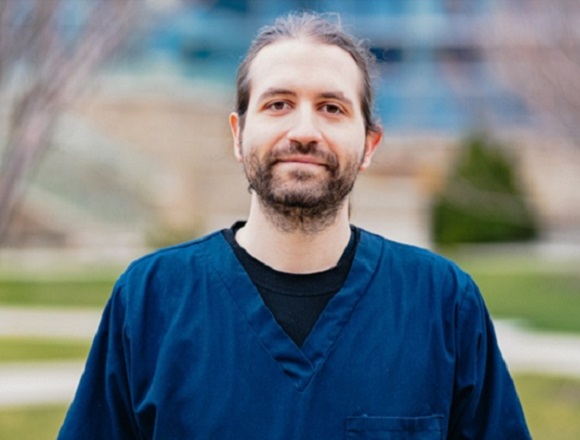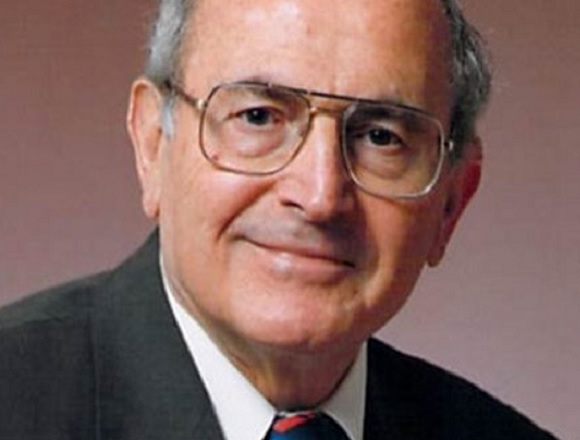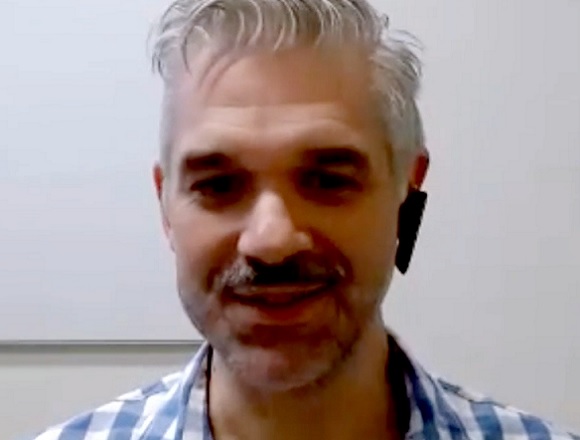Margaret J. Larché, MD, PhD, professor of medicine in the Divisions of Rheumatology and Clinical Immunology and Allergy and Departments of Medicine and Pediatrics at McMaster University, director of the Canadian Scleroderma Research Group, chair of the Hamilton Scleroderma Group, and past president of the Canadian Rheumatology Ultrasound Society, joins Roman Jaeschke, MD, MSc, critical care physician and methodologist, to describe the pathophysiology of inflammation associated with rheumatoid diseases and talk about the history of pharmacotherapy and novel revolutionary drugs in rheumatology.
Contents
- Rheumatoid diseases: Pathophysiology
- Rheumatoid diseases: Pharmacologic therapies
- Rheumatoid diseases: Novel revolutionary drugs
Transcript
Roman Jaeschke, MD, MSc: Good morning. Welcome to another edition of McMaster Perspective. I would like to introduce to you Professor Maggie Larché from the Department of Medicine, rheumatologist especially interested in rheumatoid arthritis (RA) and scleroderma, who published quite extensively in this area.
The request for this was triggered by another article considering anti-inflammatory treatment for RA. On my personal level I have to say that the revolution in anti-inflammatory treatments triggered also an avalanche of concepts and medication classes, which are quite difficult to comprehend for a mere mortal like myself.
Dr Larché, maybe we can start by asking about current concepts of inflammation with emphasis, obviously, on diseases of your interest.
Margaret J. Larché, MD, PhD: Yes, thank you for that question. The basis of inflammation in many of our inflammatory diseases focuses around inflammatory cells such as the B cells and the T cells. It also focuses around how those cells signal with each other, so the signaling cascade, and then the molecules that they produce—cytokines—that can generate an inflammatory response.
When we’re thinking first about the cytokines, we’re thinking about several key cytokines that trigger that inflammatory cascade. Tumor necrosis factor (TNF)-alpha was the first one that was discovered in the 1990s and was used towards the end of that decade as an inhibitor of TNF-alpha to abrogate the inflammatory cascade. That led to a whole series of TNF-alpha blocking medications such as infliximab, etanercept, golimumab, adalimumab, and so on. Those TNF-alpha inhibitors have been very useful in our armamentarium against inflammation. TNF-alpha is one of the key cytokines.
Other key cytokines, or molecules produced by the cells, are interleukin 1 (IL-1) and interleukin 6 (IL-6). Those 2 cytokines also have drugs that are targeted against them.
Moving on to cellular mechanisms, we know that the interaction between a T cell and an antigen-presenting cell requires molecules to trigger the inflammatory cascade, and those molecules are the costimulatory molecules on the T cell surface. One of them is called cytotoxic T-lymphocyte antigen 4 (CTLA-4), and that can be inhibited as well with a drug called abatacept.
Then, the B cells themselves can be targeted and those B cells are very involved in propagating autoantibodies. Of course, in rheumatology we’re particularly interested in autoantibodies, so we can block B cells as well. We can block them using a drug that’s readily available, called rituximab. So, B cells can be blocked.
Now, moving on to the cellular signaling, there are several pathways that allow the cells to generate the signal to generate inflammation. Those signaling molecules can be targeted as well. For example, the Janus kinase (JAK) molecules can be inhibited, and medications such as tofacitinib or upadacitinib are examples of [those inhibitors].
Whilst we’re learning much more about the inflammatory cascade in RA, we also have been able to develop targets for medications to try and target those inflammatory molecules, trying to inhibit inflammation in a very specific way.
Roman Jaeschke: Well, that is frankly fascinating. It sounds like we can inhibit B-cell response, T-cell response, the interaction between T cells and cells presenting the antigens…
The one thing that is missing, at least logically for me, is what starts it all? I know that once the inflammation starts, we can try to influence it, but what is the trigger here? Why some people get RA, and others do not?
Margaret J. Larché: That’s a Nobel Prize–winning question. If I can answer that in the next ten 10 years of my career, I’ll be delighted.
What we know is that there’s a combination of genetic predisposition. There’s a genetic marker in the human leukocyte antigen (HLA) molecules, called the shared epitope. If you have a positive shared epitope, you’re more likely to develop RA.
Having said that, you can have RA without the shared epitope. It’s not a diagnostic test by any means but it gives us the hint that there’s a genetic component to the development of autoimmunity, in particular rheumatoid in this case.
We know that there are certain environmental triggers, which can perhaps lay on top of the genetics, epigenetics, and may trigger the autoimmune profile in RA.
Roman Jaeschke: Okay. Well, I will follow up with another question. Why does it wax and wane? What’s happening? Even without treatment, the disease activity keeps changing.
Margaret J. Larché: That’s a great question. “We don’t know the answer” is the quick answer. A better answer would be looking at the environment of the patients, so very frequently I will hear that the patient has a flare around the time of a viral illness, for example. You would expect that the inflammatory milieu is all jazzed up from a viral infection and that then leads to a flare in rheumatoid, so that the inflammatory cascade gets triggered to cause a flare.
Other examples of environments causing flares I hear about every single day in my clinic… That is stress. People who have a stressful life event will frequently have a flare. What is it about stress? It’s the adrenaline hormones that drive that stress response and may trigger an inflammatory response. Again, we don’t really understand why people flare but they do, and it’s likely environmental triggers that do that.
Roman Jaeschke: Thank you very much. I think we have enough for one short segment about inflammation and we’ll come back to what we can do about it at some later time. Thank you very much.
Maggie, I wonder if we could review with you a history of drugs used in RA and where do they fit these days into the inflammatory mechanism, which we are starting to understand better?
Margaret J. Larché: Thank you for that. If we want to start, most physicians are very familiar with nonsteroidal anti-inflammatory medications (NSAIDs). Those may be—and in fact used to be historically—our first go-to drugs for inflammation. If a patient has a warm, hot, swollen joint, you might reach for an anti-inflammatory.
Those, of course, target the prostaglandin and the arachidonic acid systems and they block inflammation quite well. They work well to inhibit some of the cardinal features of inflammation of rubor, dolor, calor, and tumor. However, they do nothing to inhibit the immune response and the inflammatory cascade. They’re a great go-to drug for symptomatic relief but they do not do anything to help the disease.
Moving on then to corticosteroids, we use those very frequently. Even now, with our whole armamentarium of medications that I’ll go into in a few minutes. Corticosteroids are used very frequently—and I give the analogy to my patients—as a fire blanket: we are wanting to put the fire out and we use a blanket of corticosteroids to do that.
Moving on, in a little bit I’ll talk about the very targeted treatments that we can use, and I use the analogy of a fire hydrant where you direct the hydrant to the actual molecule that’s going to stop the cascade.
Anyway, the blanket medications include corticosteroids. We can give those either orally, intramuscularly, or even intravenously in very rare occasions in rheumatoid. We can also give them intra-articularly. Those really help to quell inflammation very vigorously and very well.
The next level of medications, probably first introduced in the 1950s and 1960s, were medications that inhibit cell division. Several of them have been stolen from oncology. Methotrexate: we use methotrexate at homeopathic doses—I’m using that phrase with humor because the oncologists laugh at us when we use 20 milligrams of methotrexate. Methotrexate is our gold standard, our go-to drug. It inhibits cell division, it stops the immune and inflammatory cascade from carrying on, and actually stops RA in its tracks. We know methotrexate will stop the progression of disease. What I mean by that is it inhibits the progression of erosions. As you’ll all be aware, erosions lead to dysfunction in the joints and more morbidity. So, methotrexate is our first go-to medication.
We often use what we call triple therapy. What’s meant by that is a combination of these drugs called disease-modifying antirheumatic drugs (DMARDs). Methotrexate is the sort of key, but bolted onto that key is often sulfasalazine. That’s an older drug. Again, it inhibits cell division. Often we will add hydroxychloroquine, Donald Trump’s favorite drug. That drug is used as an adjunct with the other disease-modifying agents.
Triple therapy can mean other things, including, instead of sulfasalazine we may use a newer medication—although still not very new—called leflunomide, which also inhibits cell division. That medication can be used in conjunction with methotrexate and hydroxychloroquine, again, calling it triple therapy.
Roman Jaeschke: When you are using the phrase cell division, are we talking about inhibiting inflammatory cell division like lymphocytes or proliferation of fibrotic responses to inflammation?
Margaret J. Larché: Yes, it does inhibit the actively proliferating cells, so those inflammatory cells would be inhibited.
Now, some of the side effects of inhibiting cell division can be inhibiting healthy cell division, such as in the oral cavity. Aphthous ulceration is really quite common, and, of course, oncologists are much more aware of this than I am because they use much higher doses.
But yes, predominantly we’re trying to target only those really rapidly proliferating cells.
Roman Jaeschke: Okay. Sorry, I interrupted you, we are in disease-modifying older drugs.
Margaret J. Larché: Yeah, so those 4: methotrexate, sulfasalazine, leflunomide, and hydroxychloroquine are our mainstay drugs called DMARDs.
Those are used first line in patients and they’re used first line because they very frequently work. The governments—in Canada, certainly, and many governments across the world—will mandate that we use those DMARDs first. If those don’t work or if there’s a contraindication to those, then we may move on to drugs that are colloquially called the biologics.
Biologics are divided into biologics that target either cells or cytokines, or they’re divided into what are called targeted synthetic DMARDs. Those are drugs that are targeting the Janus kinase pathway.
Moving on to the biologics, we have at least 5 categories of biologics. We have drugs that target TNF-alpha, we have drugs that target IL-6, IL-1, and then we have drugs that can block the way T cells activate, [blocking interaction of T cells with] their antigen-presenting cells, with drugs like abatacept. And then the final category of biologics is the drugs that target B cells, such as rituximab. Each of those medications has its own merits. I’m trying to make a decision as to which drug works better. I think we’ll discuss it in another session of our chat.
Finally, the last category are these targeted synthetic DMARDs, which block cell signaling and stop the cells from generating that immune inflammatory cascade. Those are called Janus kinase (JAK) inhibitors.
Roman Jaeschke: Okay. Well, there’s quite a progression here. One other question. When I was a young internist, we used to use gold. Where does that fit into all this?
Margaret J. Larché: That’s a really phenomenal question. I did my training just as gold was becoming less used. In fact, in my whole career I’ve never prescribed gold.
Having said that, I have several patients who have historically been on gold and continue on gold, and they do very well. In a subset of patients gold seems to work very well. I don’t believe the mechanism of action is very well understood at all, but in a small subset of patients it’s very well tolerated and achieves good disease control.
Roman Jaeschke: Well, maybe it is good to have a little bit of gold in you, but anyway…
I remember my early years of practice when we had rheumatoid wards, on which we had dozens of people with tremendous disability and disfiguration, and it all disappeared ~10, 15 years ago. My question to Professor Maggie Larché is, how did we achieve that and how do we choose these days what we use to treat those people? Professor Larché.
Margaret J. Larché: Thank you. It’s been an absolutely amazing journey over the past 25 years watching the revolution in treatment options for our patients with RA. As you alluded to, in the 1980s and 1990s and historically before, we really didn’t have many great treatments for RA and we would often see these patients with disfigurement and disabilities because of RA. Indeed, I know that in my institution we had a hospital with 20 beds available for rheumatology, which is really unheard of now certainly in our practice.
What happened? What happened was the explosion of biochemical knowledge of the pathogenesis of RA. Using the knowledge of the pathogenesis, we were able to make specific drugs that target those molecules. That’s what’s happened.
How do I choose a medication? I will obviously first see the patient, do a full history and examination, and find out whether they have active disease. I would base that on a variety of things: swollen and tender joint count, inflammatory markers, patient symptoms. We use those types of measures to give ourselves a composite measure of disease activity. Some of us also add ultrasound or other imaging parameters to that milieu to determine whether the patient really has active disease. And on the basis of antibodies as well—as you know, some patients with RA have a positive rheumatoid factor (RF) or anticyclic citrullinated peptide (anti-CCP).
In those patients, especially if we see erosions, we will want to treat them vigorously at the beginning. What do I mean by vigorous treatment? Well, I mean starting with methotrexate, usually adding in other DMARDs to give the patient triple therapy. Triple therapy usually means these days methotrexate, leflunomide, and hydroxychloroquine, all together. Studies have shown that really hitting patients hard with this type of triple therapy at the beginning of a severe inflammation response can really abrogate the course of their disease and prevent erosions and damage. That’s how I would start. Sometimes I would start with monotherapy with methotrexate, especially in those patients who have a sort of more grumbling, moderate presentation, and then I may add in leflunomide and/or hydroxychloroquine.
My government will insist that we try triple therapy for at least 3 months before we would be allowed to apply for biologic medications. That’s a reasonable ask from the government, in my opinion, because these triple therapies work in a large proportion of patients.
There are some patients in whom it doesn’t work and they’ve still got grumbling, ongoing inflammation despite these triple therapy medications. What would we do next? That’s a really hard question to answer, but we are blessed with a multitude of options. The first drugs that became available to us in the late 1990s were the tumor necrosis factor (TNF) inhibitors. Infliximab was the first one that was developed by professors Maini and Feldmann at the Kennedy Institute in Imperial College. They used TNF inhibition in their patients with active RA with infliximab and showed a dramatic improvement in them. They have revolutionized the treatment of inflammatory arthritis.
Roman Jaeschke: I understand you are actually part of that team, or part of that process?
Margaret J. Larché: That’s right. I was lucky to be in the right place at the right time in the late 1990s and early 2000s and enjoyed doing my post-doc there.
Roman Jaeschke: Congratulations.
Margaret J. Larché: Thank you. That led to a whole flurry of other TNF inhibitors. Etanercept—which is a receptor blocker, as the name would imply—binds to the TNF receptor and therefore inhibits its function. That was the next TNF inhibitor to come on board. Then there is a sequence of other TNF monoclonal antibodies: golimumab, adalimumab, certolizumab—all available for blocking TNF in patients with inflammatory diseases.
Those were the first available and they are often the first chosen biologics. They are all given systemically either by subcutaneous injection or intravenous infusion. Sometimes we might want to choose an intravenous infusion for our patients, especially if we’re worried about compliance. They get an infusion every 8 weeks: they go to an infusion center and we know they’ve definitely had it. That is one way to give those drugs. Subcutaneous is much more user friendly in a way and the patient can do it themselves at home with adequate tuition from nursing staff. That would be the other option.
And then, which patients would we maybe not choose a TNF inhibitor in? Well, predominantly those with heart failure (HF). Studies have shown that TNF inhibition can aggravate HF, so we really would want to steer away from those medications in patients with coexisting HF.
Moving on to other mechanisms of action, the other modalities include blocking IL-6, and we use that by using another receptor blocker called tocilizumab—that’s the one that’s available in Canada. It can also be given intravenously or subcutaneously and we have a choice there. Which patients would I maybe not choose that medication for? Well, predominantly patients with diverticulitis. I would not want to give that [to them] because there are some case reports of causing bowel perforation.
Moving on to blocking T cells, we can block the way T cells activate other antigen-presenting cells by using a drug called abatacept, and that drug is also given... we have a choice between intravenously or subcutaneously and we may preferentially choose that drug in patients who have previously had serious infection, because the risk of serious infection with that drug seems to be lower than with the other biologics.
We can also block B cells using a medication called rituximab. That’s a medication that’s given by intravenous infusion: 2 infusions 2 weeks apart every 6 months. The pandemic has really brought that forefront of our minds, because none of us really wants to inhibit the B cells very vigorously and inhibit an antibody response by inhibiting B cells in the light of the coronavirus disease 2019 (COVID-19) pandemic. So it’s used—it’s used frequently in our cases with recalcitrant RA—but personally I have used it less frequently during the pandemic.
Finally, there are oral medications called targeted synthetic DMARDs, the JAK inhibitors, which inhibit cell signaling. Those are used actually more and more [often] at first line after the triple therapy because they’re oral. Patients love a daily oral pill. They don’t like injecting themselves, they don’t like the idea of it, they don’t like the complexity of it and the complications of traveling, and so on. Sometimes we will choose a JAK inhibitor over the others because they’re oral.
Which patients might I steer away from a JAK inhibitor? Those with venous thromboembolism (VTE), because there’s a black box warning on JAK inhibitors predominantly relating to tofacitinib. Unfortunately, the United States Food and Drug Administration (FDA) looked at all the literature and decided that there was enough evidence to say that JAK inhibitors doubled the low risk of VTE, so in patients with previous deep vein thrombosis (DVT), or pulmonary embolism (PE), or other thromboembolic event, I may steer away from the JAK inhibitors.
I hope that’s giving you a bit of an idea of what I would do in my path to treating patients.
Roman Jaeschke: Well, that is all fascinating. The world of inflammatory diseases starting from rheumatoid but going through inflammatory bowel diseases, psoriasis, or the cytokine storm seen in the setting of COVID-19—this is all a new field with an incredible amount of applications. In intensive care and people with COVID-19, we use both a JAK inhibitor baricitinib and clearly an IL-6 antagonist tocilizumab. These are drugs that we never heard about before in sepsis but we suddenly do that.
We were talking about the inflammatory cascade, we were talking about how to influence it, we have these drugs, which are nothing short of a miracle. The question is, is there something that could go wrong with them? What should we be paying attention to? What are the dangers, especially in terms of infections? Professor Larché.
Margaret J. Larché: Thank you for this really important question. When I first meet a patient with newly diagnosed rheumatoid in my practice, I will send them with a huge amount of homework to do. I warn them ahead of time that they’re going to be getting some homework. What do I mean by that? What I do at baseline is a whole series of blood work. I’ll tell you about that in a minute. I do a chest X-ray and I send them for all their vaccinations.
What blood work would I do right at the very beginning? I would do a complete blood count (CBC) and I predominantly really am looking for adequate white cells and hemoglobin. I would then do liver function testing to make sure they don’t have a baseline transaminitis or other, for example, an autoimmune liver disease, that could coexist. I would do hepatitis B and C screening at baseline, because a lot of our medications can inhibit the immune response vigorously enough to activate hepatitis B or C. I would do baseline lipids on everyone. I do baseline lipids on everyone for 2 reasons: (1) every patient with an inflammatory arthritis has a higher cardiovascular risk and therefore being able to abrogate that cardiovascular risk by suppressing their lipids, for example, may help them in the long term in terms of their increased cardiovascular risk from having rheumatoid, and (2) some of the medications we use can push up the serum cholesterol and triglycerides. So those would be my baseline blood works.
I then said I would do a chest X-ray at baseline. Again, several reasons to do that: first, make sure they don’t have rheumatoid lung disease—unlikely at the very start of their rheumatoid journey but possible. Make sure they don’t have a concurrent pneumonia, for example. Methotrexate, our gold standard and go-to DMARD, can very rarely induce a pneumonitis. What I like to know at baseline is that they had a normal chest X-ray. That’s another reason that I do a chest X-ray at baseline.
I would then send my patient to their family doctor, their general practitioner (GP), asking the GP to make sure all their age-appropriate vaccinations were up to date, including their pneumonia vaccinations and shingles vaccination. I would ask the GP to also do a tuberculosis (TB) skin prick test, especially in those patients who have not had a bacillus Calmette-Guérin (BCG). If you’ve had a BCG, you’re likely to have a positive TB skin prick test, but in patients who have not had a BCG, such as many patients in Canada, I would get a TB skin prick test.
The reason I want the vaccinations up to date is that many of these medications can double the risk of infection and serious infections such as pneumonia, urinary tract infection, and cellulitis. Those infections risk can be doubled with many of our biologic agents. I need the patient vaccinated against Zoster because in the clinical trials of the JAK inhibitors, there’s a doubling risk of shingles in those clinical trials, so we like to make sure our patients are adequately protected. What I really like to do is get all those vaccinations done upfront before I start methotrexate and/or triple therapy, so that we get a really robust vaccine response.
Then, in terms of monitoring our patients, it depends on which drugs we’re using. For example, with any of the triple therapy agents or any of the DMARDs, we would want monitoring of CBC roughly monthly, but if stable, 2- to 3-monthly. So, monthly bloodwork, CBC, liver function testing, and renal function, and for certain patients we would want to be monitoring creatine kinase (CK) and lipids. I’ll talk about them in a minute. We also want to take a history to make sure the patient doesn’t have a prior history of malignancy, and certainly be aware of that malignancy and talk to the oncologist if it’s necessary. Then we want to take a clear history of cardiovascular risk like I outlined at the beginning. We also want to monitor for cardiovascular disease as we’re going on.
In terms of in which patients I would look at the CK and liver function tests, those are the patients on the JAK inhibitors, as there can be a doubling or tripling of the CK levels in those patients. It’s not thought to be pathological or associated with muscle weakness, but we do see that rise in CK. We’d like to monitor lipids in patients on the IL-6 receptor blockers because lipids can go up in those patients.
That’s really an overview of the baseline testing and then the monitoring that I would want in my patients on any of these drugs that we use for RA.
Roman Jaeschke: And then obviously there is a higher index of suspicion and lower threshold for looking for complex infection if patients develop symptoms.
I think it is very helpful to me as a simple internist. I really appreciate all your input and thank you very much. It was very useful, at least to me, and I hope to at least some of our listeners. Thank you, Professor Larché.
Margaret J. Larché: Thank you very much.
 English
English
 Español
Español
 українська
українська










